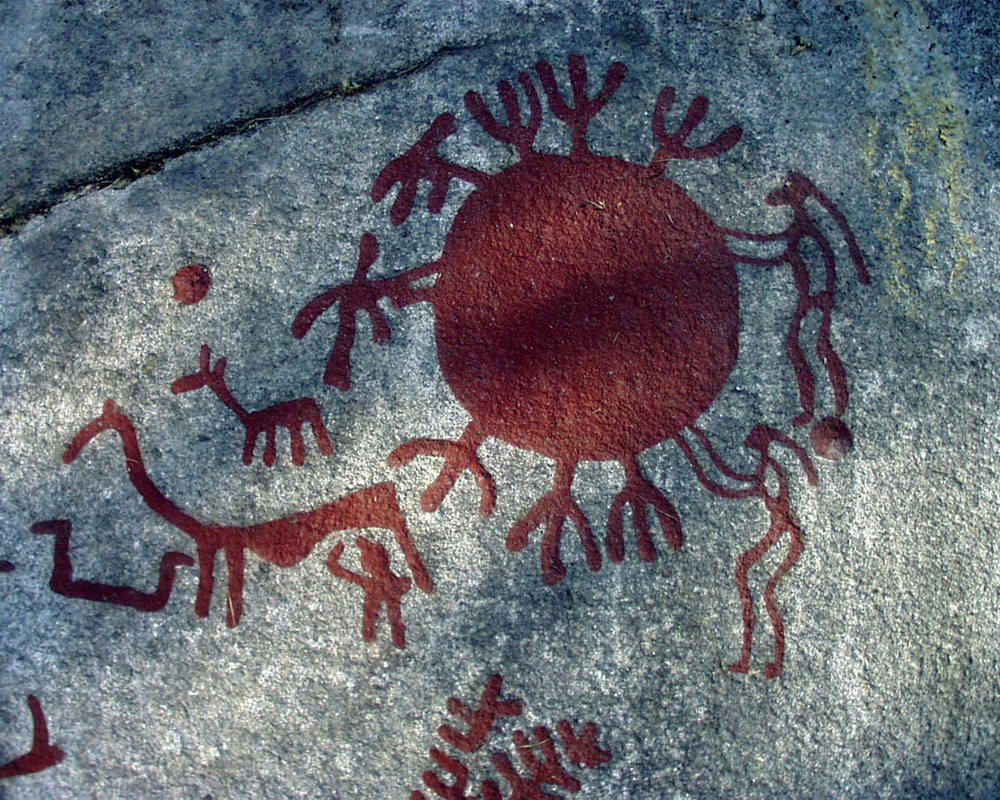Aspeberget
The Holy Mountain
Aspeberget is situated some 700 meters south from the Vitlycke Museum along the road to Kville. There is a parking on the left from which it is just a small walk to the first of many panels here.
This is where you will find the powerful Bulls, carved to a depth of more than 1 centimetre. To Bronze Age humans, cattle were very important. The animals grazed on all land that was not used for growing crops. In mythology, the bull was very important. It represented fertility, bravery, and strength.

Underneath the bulls, a man ploughs using an ard, a predecessor to the plough. This is one of the few carvings that depict work. The rock carvers rarely took their inspiration from real life on earth. The ard and the ploughman are clearly connected to fertility and regrowth.
 The first panel also has one of the most remarkable of Bohuslän’s many symbols of the sun; a round disc with fork-like sunbeams. The disc is held by two female figures, opposite them are two other figures of unknown gender. This image is unique in Scandinavia. Similar sun discs have been seen on Bronze Age ceramics, found on Bornholm.
The first panel also has one of the most remarkable of Bohuslän’s many symbols of the sun; a round disc with fork-like sunbeams. The disc is held by two female figures, opposite them are two other figures of unknown gender. This image is unique in Scandinavia. Similar sun discs have been seen on Bronze Age ceramics, found on Bornholm.
Follow the path until you reach the balcony from which you see a figure holding 28 small cup marks, floating above its enormous hand. The cup marks have been arranged in rows of seven, plus one that is so cleverly positioned, it makes them difficult to count. Are we looking at a calendar?
Continue up the steps to see more carvings, including the Ducks. Birds were very important in most pre-historic religions and myths. Gods turned themselves into birds or used them as messengers, scouts, or means of transport.
At the end of the path is a large carving that shows a procession of ten men and a woman with her hair in a braid. This is probably a dance. Ritual dancing and music were very important features in the ceremonial lives of people at this time. Horns are found in many rock carvings and around 40 bronze horns have been found, usually in pairs, in southern Scandinavia.



